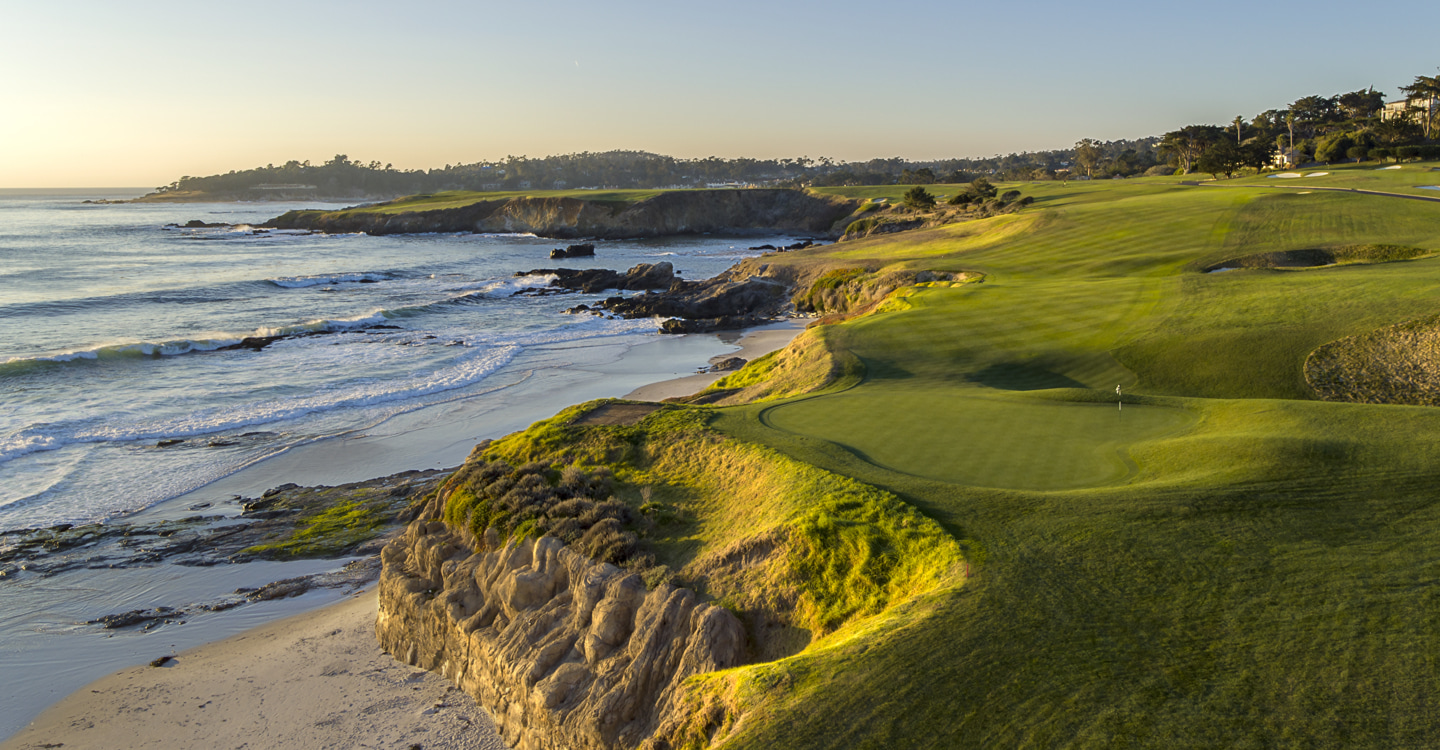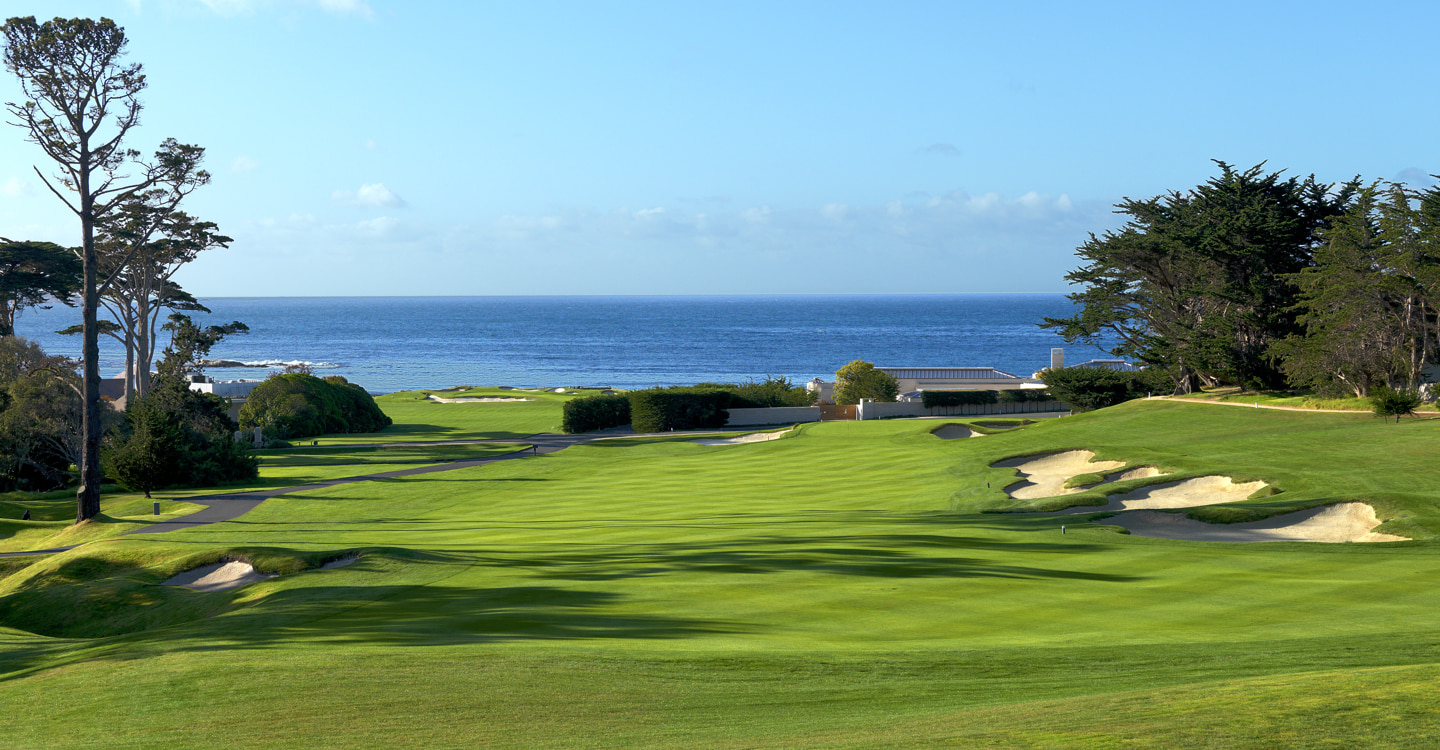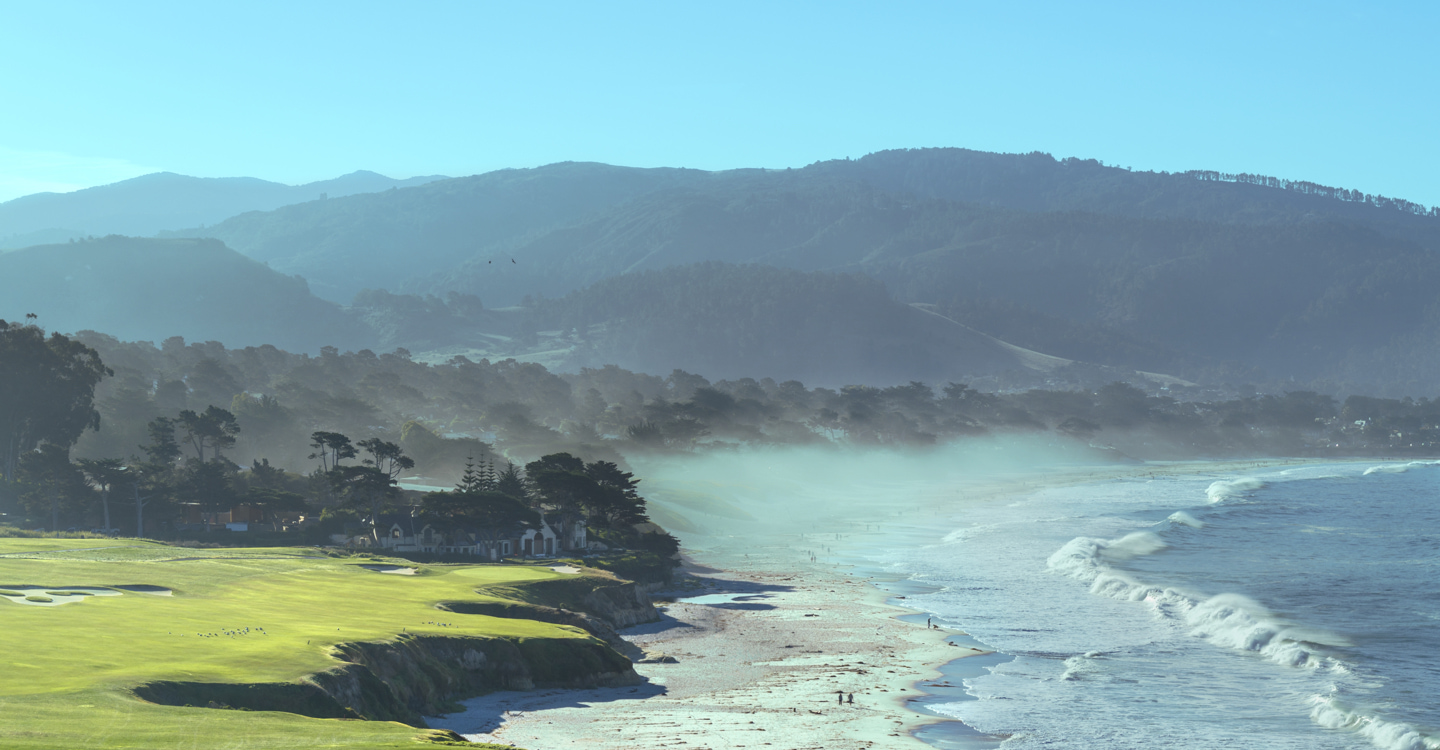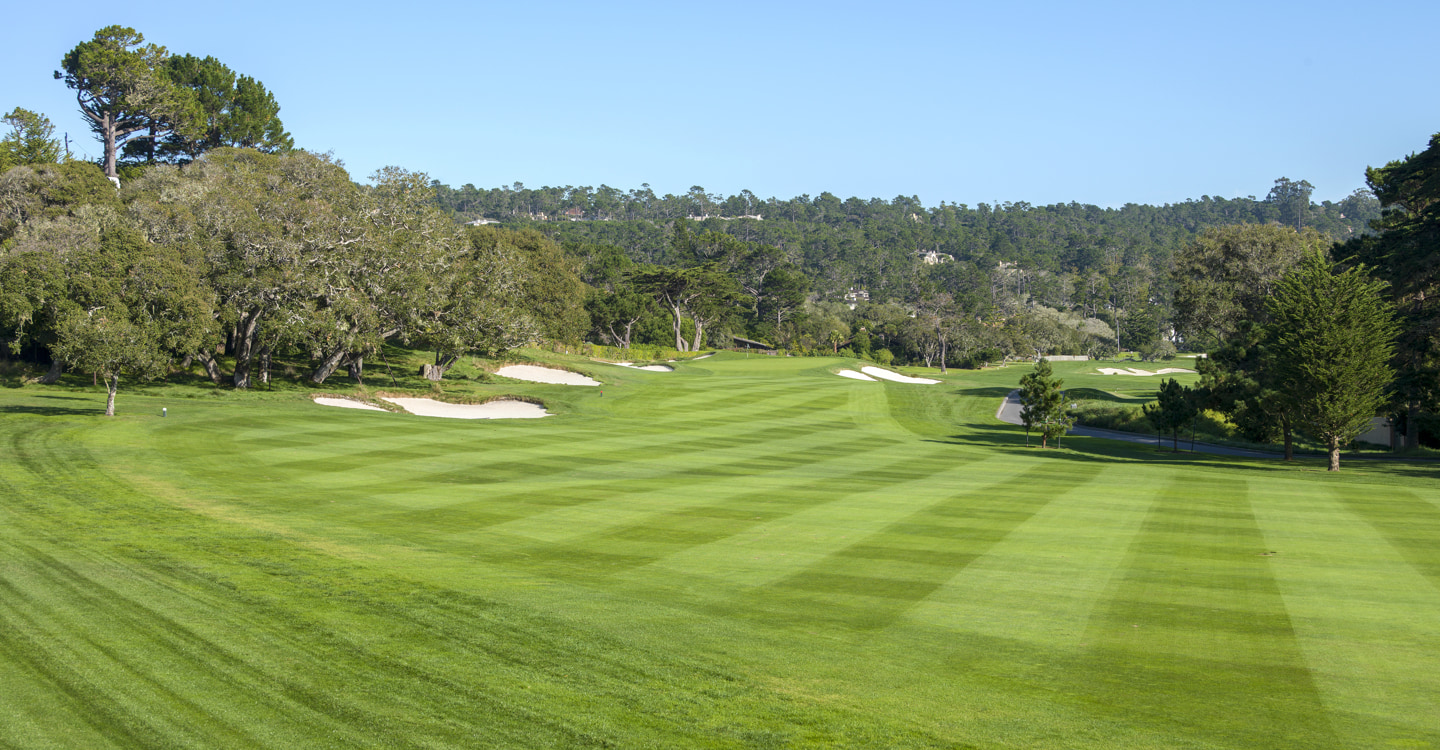Unlike most of its fellow old-school championship hosts, Pebble Beach Golf Links hasn’t gotten much longer in the past half century. At the 1972 U.S. Open, it played at 6,815 yards. This weekend, it will stretch to 7,075—as much yardage as the course can muster without putting tees on the roofs of the surrounding mansions. Augusta National, by contrast, has swelled from 6,980 to 7,475 yards in the same period.
So for today’s pros, Pebble Beach is a small ballpark. But it’s still a formidable championship venue. The 2000 and 2010 U.S. Opens, in which harsh USGA setups met foul weather, were memorably brutal. Even during the annual AT&T Pro-Am, when the course is set up wide, soft, and short to get the amateurs around in a timely(-ish) manner, it’s hardly a pushover. Typically it yields a scoring average of 71.5 to 72, and when the wind picks up, as it did in 2014, Pebble Beach becomes one of the toughest courses on tour.
So why has it stood the test of time? One reason is the clever way the course uses the immense slope of its property. The land tilts toward the sea, and most of the holes are set across this hillside rather than up or down it. As a result, even when players find the fairway, they often hit their next shot with the ball significantly below or above their feet.

The heavily sloped 9th hole at Pebble Beach. Photo credit: Evan Schiller
In and of itself, this aspect of the design would not be particularly interesting. There are plenty of banal courses on the sides of hills. But what makes Pebble Beach’s tilted fairways compelling is their connection to the size and orientation of the greens.
First, the obvious: the greens are small. To approach a small green from a sidehill lie is a technical and mental challenge, even for the world’s best golfers.
But it’s not just the size of Pebble’s greens that makes them difficult to hit; it’s also their orientation relative to the slope of the fairways. On several holes, the shot shape encouraged by one’s lie in the fairway is opposite to the shot shape most readily received by the green.
For instance, on the 3rd hole, the fairway falls to the left, leaving right-handers with the ball above their feet, a lie that promotes a draw. (From this point on, for simplicity’s sake, I will refer to “fade lies” and “draw lies” in reference to right-handed players. Apologies, lefties.) The green, however, sits on a left-to-right diagonal that is more receptive to a fade. A hooking approach would have to carry the front-right bunker and stop short of the back-left section of the green, which runs away. So the orientation of the 3rd green rewards those who can control their ball flight from a lie that promotes the wrong shape and the wrong miss.

The 3rd fairway and green at Pebble Beach. Photo credit: Evan Schiller
The same is true on several other holes, especially Nos. 4, 9, and 10 (fade lies, draw greens), and Nos. 11, 13, and 18 (draw lies, fade greens). Nos. 4, 9, 10, and 18 offer the additional intrigue of the shoreline, tempting players to risk disaster in search of the preferred angle. Consider the 10th hole: if your drive finds the promontory above the beach 280-320 yards from the tournament tees, the green will open up to you. You can hit a draw, a fade, a straight ball, whatever. But the more you hedge away from the bluffs, the worse your lie and angle will become. The orientation of the green will appear to demand a right-to-left approach, but the slope of the land will encourage the opposite.

Looking down the 10th hole at Pebble Beach, with Carmel Beach to the right. Photo credit: Evan Schiller
(To be clear, playing away from the cliffs may be the best tactical decision for you, depending on your skills and tendencies—but it comes with consequences.)
Other approach shots at Pebble Beach are less about negotiating angles and more about avoiding common misses—that is, the misses encouraged by the slope of the fairway. On the 1st hole, there’s a fade lie and a drop-off to the right of the green; on the 11th, a draw lie and a drop-off to the left; on the 6th and 8th, fade lies and cliffs to the right. And so on.

The approach to the 1st hole at Pebble Beach. Photo credit: Evan Schiller
Add wind to the equation, and Pebble Beach, after all these years, can still be a brute.
This is why great iron players have thrived here, and why Pebble Beach remains a viable U.S. Open venue. Although elite male pros now hit short irons and wedges into many greens, they still have to contend with sidehill lies and tiny, unaccommodating, sadistically guarded targets.
They face similar challenges at two other time-tested American championship sites: Augusta National and Shinnecock Hills. At those courses, the terrain slopes just as dramatically, and the greens, although bigger, call for just as much accuracy and ball-flight command.
This weekend, commentators are likely to speak of the difficulty of Pebble Beach in the context of the USGA’s setup decisions: tight fairways, gnarly rough, rock-hard greens. Those will be key factors, no doubt, but they are not the secret to Pebble’s enduring relevance. In fact, narrower fairways actually blunt the complexity of the challenge I’ve been describing. The USGA has grown rough over what were intended to be bail-out areas in the fairways, where safety from hazards could be had at the cost of uneven lies and bad angles into greens. Now when players find themselves in these awkward spots, instead of attempting, perhaps unwisely, to shape a draw against a fade lie or a fade against a draw lie, they will simply hack out because the rough will give them no other option.
So during this week’s telecast, rather than fixating on the transitory elements of course setup, try to see the real Pebble Beach. Watch a player as he addresses an approach. Is the ball below his feet? Above? In the distance, how is the green situated? And how uncomfortable does the player seem? That is the essence of the Pebble Beach examination—as it was in 1919, and as it is in 2019.
Sign Up for The Fried Egg Newsletter
The Fried Egg Newsletter is the best way to stay up to date on all things golf. Delivered every Monday, Wednesday, and Friday for free!


 by
by 
